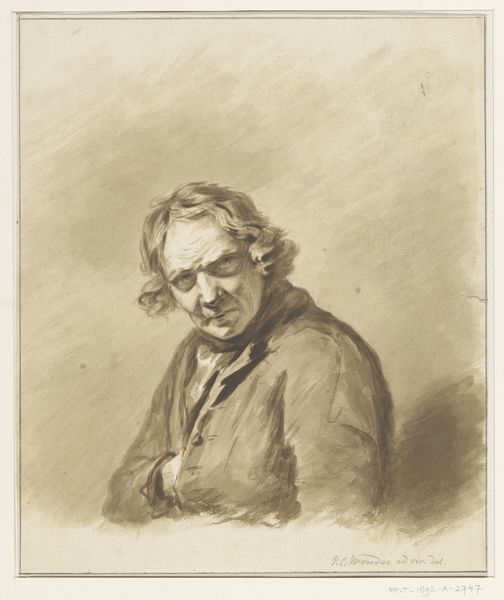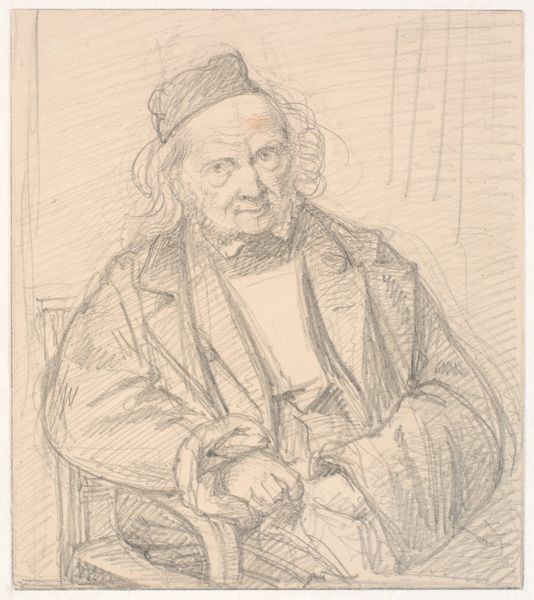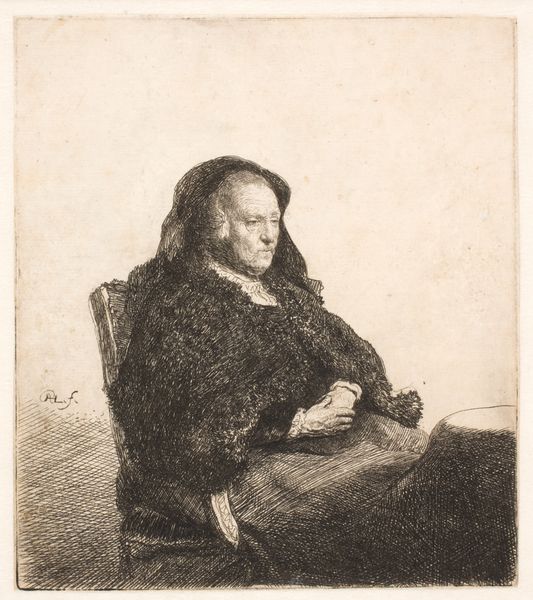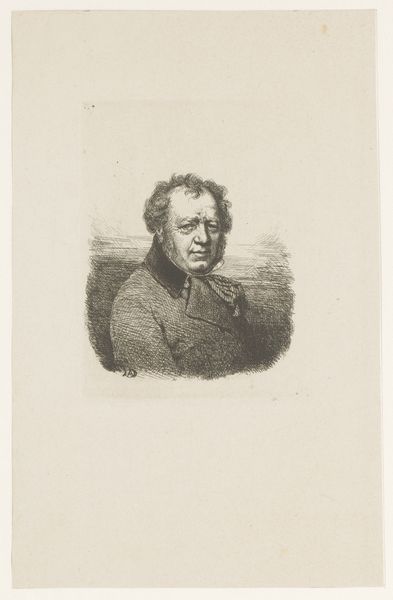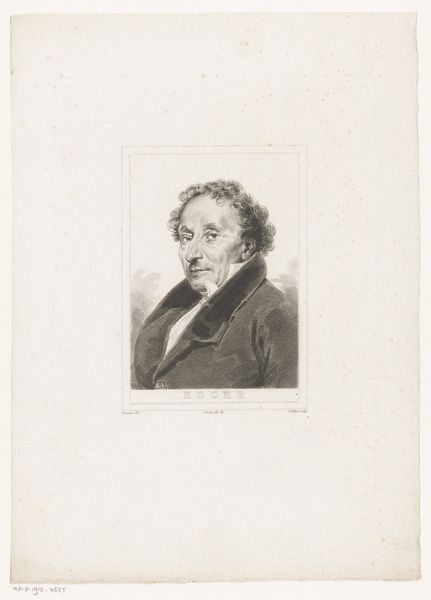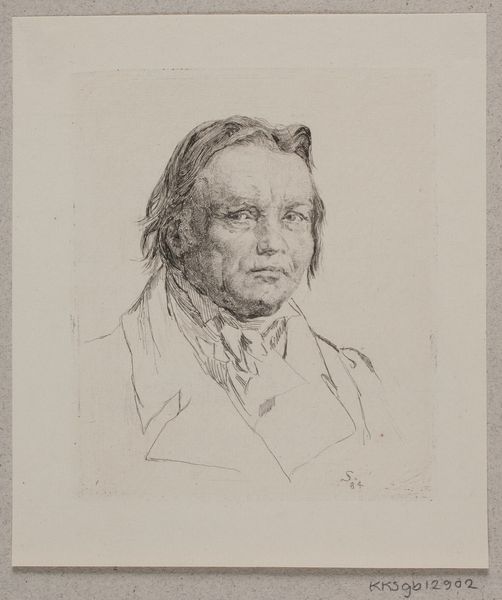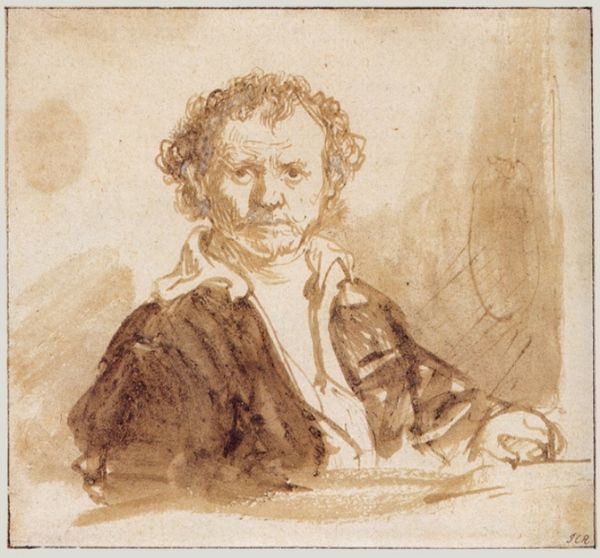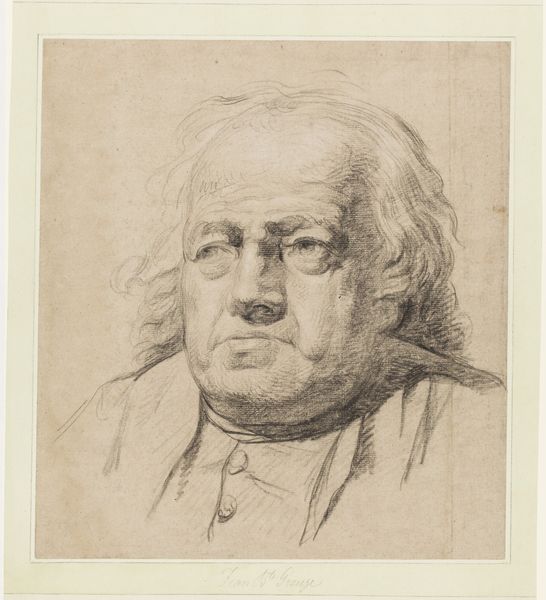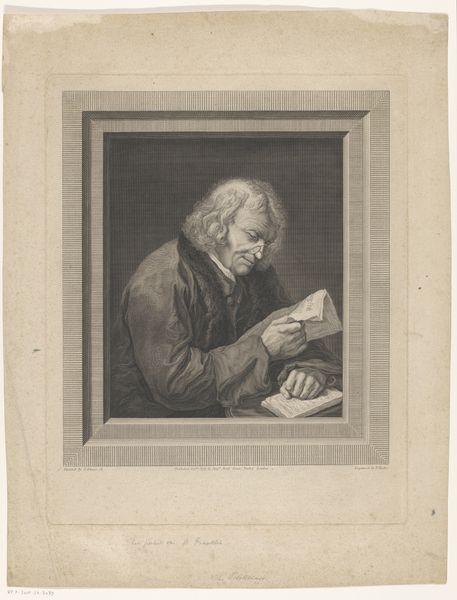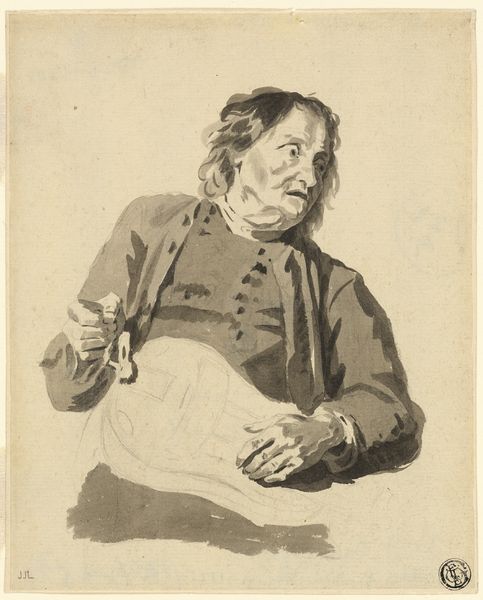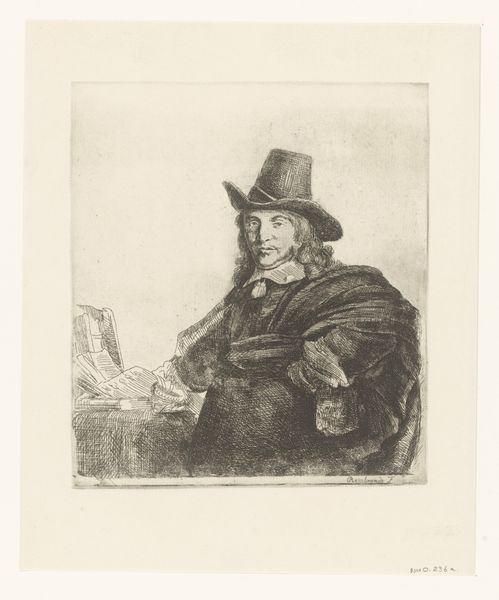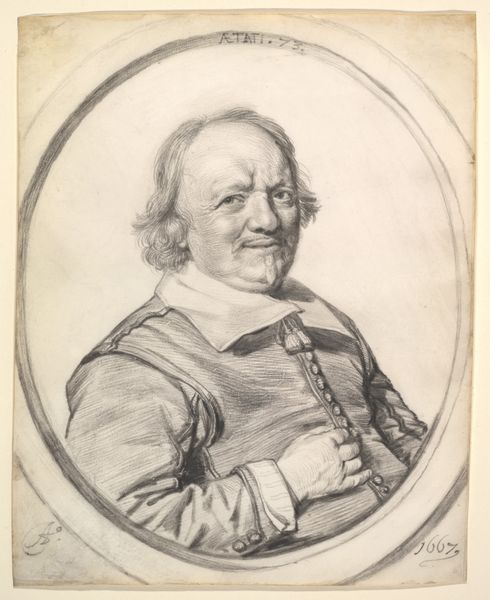
drawing, charcoal
#
portrait
#
drawing
#
charcoal drawing
#
pencil drawing
#
portrait drawing
#
charcoal
#
history-painting
Dimensions: sheet: 12.4 × 9.1 cm (4 7/8 × 3 9/16 in.) mount: 20.8 × 17.9 cm (8 3/16 × 7 1/16 in.)
Copyright: National Gallery of Art: CC0 1.0
Editor: Here we have Francis Le Piper's "Head Study of a Preacher" from around 1670, executed in charcoal. It's interesting how the textures created by the charcoal lend such gravity to his face. What stands out to you when you look at this drawing? Curator: For me, it's the very act of creation we should first acknowledge. Look at the charcoal, a humble material readily available. Le Piper is engaging with readily sourced materiality and we, too, are consumers of imagery, and should recognize our similar historical positions. I also see a breaking down of hierarchy here: a "head study" moves away from idealized representations towards something more… observational and, dare I say, mundane. Editor: Mundane? I thought portraiture was how artists gained patronage. Was this an atypical choice for Le Piper? Curator: Precisely! The choice of medium itself signals something. Charcoal, unlike oils, is immediate, less costly, and allows for a certain looseness. Think about the social and economic factors at play: what did readily available materials say about who was being portrayed and for whom? The mass production of images has drastically shifted. Editor: So, rather than a commission destined for a wealthy patron, it seems more about documenting an individual, possibly from a different social class? Curator: Possibly. Or even challenging the conventions *of* portraiture, through the use of an accessible, almost disposable, medium. It challenges the perceived value associated with the sitter. We, today, could mimic these material explorations, too, with easily accessed supplies. Editor: It gives me a lot to consider, the impact of material on the subject and social structure, now and then! Curator: Indeed, considering materiality lets us see the labor, the production, and even the subversion embedded within art.
Comments
No comments
Be the first to comment and join the conversation on the ultimate creative platform.
